Lately South Korea is becoming increasingly more popular destination, especially for people watching K-dramas and loving K-pop. Plus, everyone is interested to see this highly developed tech savvy country. I had seen a few K-dramas before, but while planning this trip, I did watch at least a couple dozen. I especially wanted to have a look at locations I wanted to visit. I gotta say I do like them, especially fantasy ones. As for K-pop, I had no clue about it and only heard about the “army” first while planning the trip (for those of you having no idea like me – army apparently means the BTS – most popular boy band – fans).
But I digress – just wanted to say, Korea did fascinate me a lot long before deciding to plan this trip, so I was very excited to finally get a chance to visit. Here are some things, I would suggest according to our experience.
When to Go to South Korea?
Summers are rather hot and humid in Korea, however, July and August are apparently still quite touristy seasons. Winters are very cold. Spring and Autumn are considered the best seasons for travel. In Spring cherry blossoms are a particular attraction, while in Autumn the beautiful colors of Autumn foliage attract the tourists. Besides, these seasons are quite mild and the possibility of rain is not that huge.
We decided to aim for the cherry blossom season – end of March -beginning of April. The thing is one doesn’t exactly know when cherry blossoms will be in full bloom. The approximate dates are published months in advance, but it changes and no one can predict exactly. Check Visit Korea website and app for forecast starting a few months in advance. In 2023 the season was earlier than expected. We managed to enjoy some during the first few days of our trip., but it rained all around the country on April 4, which caused them to fall.
Similarly, for autumn foliage there are predictions published months in advance, however, exact dates are difficult to predict.
One additional advice – don’t plan your trip during the Golden week, which is usually around the first week of May. That’s the period when most Koreans travel, so all attractions are overcrowded.
Visa/K-ETA Requirements for South Korea
As of April 2023, only citizens of 22 countries can travel without arranging any electronic permits in advance. Citizens of about 60 countries, which pre-COVID had visa free access need to obtain an Electronic Travel Authorization known as K-ETA. This is the official website, where you need to apply for it. Keep in mind, K-ETA should cost 10,300 won on the official website. If the site asks you more, you are probably on a wrong one. There are many scam websites, which look official, but charge significantly more, than it should cost. Granted, they still provide the authorization, you don’t need to pay them dozen times more.
The K-ETA form looks quite straightforward and for some people it will work very easily. I have heard of people getting approved in an hour or in a day. However, many people encounter problems with it. So, I do suggest to either apply before you book any non-refundable flights/accommodation or be sure that you can go to an actual Korean Embassy, if K-ETA fails. This advice is based on personal experience – my hubby, who was eligible for K-ETA applied for it filling in all relevant details. A week passed and finally he got an email with a refusal. Nobody explained, what was the reason for it – they never do. What many people suggest is to double check your photo, make sure it matches passport well, apply via an app, as you take photo in the app, etc. So hubby applied second time, trying to follow all this advice, but after a few days he got another rejection. After all this, we decided not to bother with this any more, as luckily we live in a city where there is Korean Embassy. So we applied for the Korean visa there, which was easy and fast.
If you, like me do require a visa, or if your K-ETA fails due to some inexplicable reason, you will have to apply at this website. You will have to choose, which Korean Embassy you will go to and fill relevant information in the form. The form is easy, the only part I hated was the one asking to list all your travels during the past 5 years. That was quite a pain to fill 😀 Btw. When I tried filling it the first time, it didn’t register, it seems they had some technical problem. I had to wait a couple of days and try again, after that it worked. Don’t forget to download the filled application form, as you need to print this to bring to the Embassy.
Once you fill in the form and submit, you can go to the relevant Korean Embassy during the hours they accept documents. For this either call the Embassy or check that information on their website. You will need to print the filled application form, passport photo, your passport, proof that you have money in the bank (we read that they require 3k USD to be on your account and we did that), your itinerary and bookings of flights and accommodation. Double check with the relevant Embassy, as the requirements may be different depending where you are.
We went to the Embassy with these documents. It took about half an hour for them to check everything for the two of us. Then they gave us instructions on how to check online if the visa is issued. You don’t leave your passport there. You simply download the visa from the website and carry it with you when you travel.
Other Requirements for Entry
K-ETA/visa is not the only thing you need in 2023. You may also need to fill the health form either online or on the plane. This requirement is lifted when you arrive from some countries, but the list of countries from which you still need Q code is very long, so definitely check, if you need it. You can get the Q code through this website from 3 days before your travel (it means that you can’t do it earlier than that. Earliest you can do is 3 days before your trip). We received the Q code via email within minutes of filling the form. Screenshot this code and have it ready when you land. You will go to a separate queue, if you have the code ready, scan it and waltz right past. If you don’t do this, you can still fill the physical form you will get on the plane. However, once you land, you will need to queue for them to check this and it will just take longer.
A third and easy form you need to fill is the customs form. You will get this on the plane and just hand it to the people, when you are leaving the airport.
Money Matters for Travelling to South Korea
South Korea is considered an expensive country to visit, however, that’s not really the case (of course comparatively to really expensive destinations like Italy, Japan, UK, etc.):
- If you book your accommodation in advance you can get a fine hotel room for average of 40-70 USD per night (depending on the city).
- The historical palaces are quite cheap, while all national museums, as well as temples are free. There are certain attractions, which are relatively expensive, but you have passes for those, if you are doing at least a few.
- Transportation is reasonable – we took trains wherever possible and got around quite a lot with under 100 USD per person.
- As for food – we are no experts on that, we mainly ate in supermarkets or the dumpling places, but restaurants aren’t unreasonably expensive, even compared to Georgia.
People often debate whether to bring cash or just card. I would definitely suggest both. If you are able to exchange a small amount to Korean Wons before arrival, that will save you time at the airport, otherwise, exchange some 20 USD or so there until you manage to find a good exchange office in the city.
In our experience, banks don’t exchange money in Korea, we found exchange offices. Be aware, that those only work in Seoul and Busan. In smaller cities, such as Gyeongju, there are virtually no exchange offices. We didn’t realize this and it was quite a hassle to find an atm to get money from the card.
Cards are accepted in many places, especially in Seoul and Busan, however, we encountered times when we could use only cash. For example, all attractions in Gyeongju stated that they don’t accept foreign cards at the moment. So don’t rely only on card and have cash with you at all times.
Getting money from atms is a bit of a hassle in Korea. Once we ended up without money in Gyeongju and didn’t find money exchange, we tried a couple of atms in banks, which didn’t work. I had to ask in a FB group, and got suggestions to look for the ATMs, which say “global”. Those were not easy to find, but finally we did.
Long story short, make sure to either exchange money or get it from Global ATMs (underlining global) in Seoul or Busan, as in smaller cities it will be far more hassle.
On the other hand though, there are some places, which don’t accept cash. We encountered this in several coffee shops. So be sure to have a card as well, not just cash. For this either debit or credit card will work find. We only had debit cards and they worked perfectly fine everywhere, where foreign cards were accepted.
Accommodation Options in South Korea
I booked hotels via Agoda, as they had the best deals at the time I was looking. However, any other platform works fine.
Seoul: The attractions are spread out and it’s impossible to stay anywhere convenient to walk to all attractions. Therefore, your best bet is finding accommodation somewhere close to a metro station. We stayed at Toyoko Inn in Dongdaemun, which was just next to one of the metro exits. This saved us a lot of time. I definitely recommend this Japanese business hotel chain. The only downside of it was that they didn’t keep our luggage for a few days inbetween our two stays there (we stayed 2 nights in Seoul at the beginning of our visit to Korea and then 3 nights by the end).
Jeonju: Basically anywhere inside and next to the Hanok village is central and convenient to walk all around. The old city area is very small, so it should be no problem. We stayed at one of the hanoks, the old style accommodation where you have to spread mattress on the floor. Honestly, one night was more than enough and I wouldn’t repeat the experience 😊 Although it head a nice touch – the floors were heated.
Gyeongju: Most accommodations are towards the north of the heart of the city. We stayed at a G hotel. It was basic but ok. We just hated the “do it yourself breakfast” idea and skipped it.
Busan: It’s a bit complicated to choose where to stay here. Haeundae beach area is popular but accommodations here are very expensive. Another option is Nampo, which is quite good. But the cheapest area was Seomyen. We chose Toyoko Inn here too and definitely liked it. Wherever you stay, make sure you are close enough to a metro – although it won’t get you everywhere in Busan, you still need it, as attractions are very far from each other and just taking buses would take ages.
Apps that You will Need in South Korea
Maps – let’s start with the most important point – Google Maps doesn’t fully work in Korea. Yes, you can pin most places and even get information on public transportation in Seoul, however it won’t give you walking directions or all transportation options. This is due to the fact that Korea doesn’t provide the information to non-Korean sources. So you will need to use Korean maps. You have 2 options – Naver and Kakao. I still used Google maps with all my pins, but whenever I needed to find a direction to somewhere or transport, I had to use Naver maps. Honestly, it’s not that convenient to use, as, even though it does have an English version, the names don’t always match with a name you find elsewhere, including on Google maps. So in order to create my pins there, I had to look in the area for a similar name, or find a Korean name of the place and search with that. In my itineraries I will try to give you Naver names, as well as Google ones to make it easier for you to find places. One note, Naver map works very badly offline, although you can download it.
Besides maps, download the following apps:
- Translate app – Google translate offline works fine. We were using the option with translating the picture. You can also download Papago – as I understand, it provides more correct translations, than Google Translate.
- For taxis, download Kakao Taxi app – we didn’t use it (actually we didn’t use taxis at all), as we didn’t get a local sim card, but it definitely would come handy.
- Klook – this may come in handy, if you would like to prebook some expensive major attractions. Have a look at the Klook pass, it may save you money if you are seeing a few places in a short period of time. We personally didn’t do any of the attraction parks (Lotte world, Everland) or aquariums, so getting this wasn’t worth it for us, but it may be for you.
- Visit Korea app – it’s an official app of the Tourism organization. You may find some interesting information about what’s happening around.
We didn’t need Seoul Subway or Korail app, as Naver provided sufficiently good information about all transport.
These are the Korea specific apps. Other than these, you just need your usual apps for airlines, accommodations, etc.
Getting a SIM Card
One very surprising thing: SIM card are very expensive in Korea. According to our research Chingu mobile provides a few cheapest options for 12k and 15k won, however, you need to prebook it at least two days before your arrival in order to be able to pick it up at the airport. We didn’t do much research into this and assumed we could buy it on the spot, but couldn’t, the bookstore at the Departures area was only for picking up the sim cards purchased in advance. We realized how popular it was when we saw a queue for pickup.
Other than that, we were only seeing the plans for 50k won and more. That’s simply a ridiculous price, so we decided not to get it and relied on the public wifi, which actually worked much better than we expected. It was available in major tourist areas.
Transport in Korea
Public transport works wonderfully in Korea. It’s almost always on time (except buses in some remote areas 😊) and very reliable. The extensive public transport network definitely warrants a separate post, which you can find here.
Food and Café Culture
Korean food is widely liked. Koreans do love their food either hot, sweet or a mix of both. I personally couldn’t eat many of the dishes simply because they make most things spicy hot (I can’t take that and whenever food is spicy hot, I simply can’t get a taste of it). For me personally food often lacked salt, but of course that’s personal preference. I did ask for salt at the restaurants a couple of times, but they would indicate on the spicy hot sauce and said “no salt”. We did eat quite a lot of dumplings and noodles, but other than that, stopped experimenting with it.
A few (mainly Mandu places), which we liked:
Seoul
- Myeongdong Kyoja – this is an extremely popular place. We visited on an afternoon after lunchtime about 2pm. There was a queue, but it went very fast, so we were seated in 5 mins. Most people were locals. Actually, everything happens extremely fast. All locals know what’s on the menu and tell directly. When they saw we were tourists, they brought us the menu, but expected us to tell what we wanted immediately, as there are only three items on the menu really. So we did tell quickly. They brought food in 2 mins. The dumplings were rather tasty, do I do suggest checking it out at least once.
- Mapo Mandu – finding it is a bit difficult, but it is where the map says it is and has Craftmccov sign up from it. The place looks quite run down and the reviews don’t seem great. However, the dumplings were pretty good and prices are reasonable.
- Other popular places in Seoul
- Hwangsaengga Kalguksu
- Kkangtong mandu
- Gwanghwamun Gukbap
- Menten
- Pao Pao
- Okdongsyk Seogyo
Gyeong-ju
- Dosol Maeul – This restaurant is very popular and quite small, so always has queues. The idea is that you register at the door, if you have a Korean number and get a message when your place is available. We didn’t have a Korean number, so we told the waiting stuff to put us on the list and they called us, when it was our time. The downside was that we had to wait at the door. It took about 20 mins overall. Their dumplings were very good, so I do suggest checking it out.
Busan
- Samjin Amook – this place next to the train station sells fishcakes and is one of the most popular places in Busan. It’s more like a fast food place – you buy the fishcakes on the first floor, then move to the second floor to warm them up in a microwave they provide. I did like a couple of them, although fishcakes aren’t really my thing. Samjin Amook also has another branch on Yeongdo.
Coffee and sweets – the highlight of our trip were the numerous cafes we visited. I even made a few separate posts with the list of all the cafes we liked.
Best 2-Week Itinerary Tips
(this can be arranged and rearranged according to your wishes)
Day 1 – Seoul – Gyeongbokgung, Blue house, Bukchon Hanok village, Jogyesa, Insadong, Ikseondong Hanok village
See the detailed tips and itineraries for visiting Seoul.
See the detailed itinerary for day 1 in Seoul.
Day 2 – Seoul – Jongmyo Shrine, Changdeokgung, Changgyeoggung, Ihwa mural village, Seoul city wall walk, Dongdaemun
See the detailed itinerary for day 2 in Seoul.
Travel to Gyeongju in the evening
Day 3 – Gyeongju – Bulguksa Temple, Sogkuram grotto, Bomun lake
See the detailed post for step-by-step guide on visiting Gyeongju.
See the detailed itinerary for day 3 (day 1 in Gyeongju).
Day 4 – Gyeongju – Hannok village, Woljeonggyo bridge, Donngung and Wolji pond, Cheomseongdae observatory, royal tombs
See the detailed itinerary for day 4 (day 2 in Gyeongju).
Travel to Busan in the evening
Day 5 – Busan – Gamcheon culture village, Songdo skywalk, Huinnyeoul Culture Village, Nampo area
See the detailed tips and itineraries for visiting Busan.
See the detailed itinerary for day 5 (day 1 in Busan).
Day 6 – Busan – Haedong Yonggungsa temple, Dalmaji-jil road, Cheongsapo observatory, Sky capsule, Haeundae
See the detailed itinerary for day 6 (day 2 in Busan).
Day 7 – Busan – Beomeosa temple, Oryukdo skywalk, Igidae coastal walk, Gwangali beach and bridge
See the detailed itinerary for day 7 (day 3 in Busan).
Travel to Seoul in the evening
Day 8 – Jeonju – day trip from Seoul – Hanok village, Gyeonggyjeon hall, Jeondong cathedral, Omokdae, Imokdae, Jaman mural village
See the detailed post for step-by-step guide on visiting Jeonju.
Day 9 – Seoul – Gyeonghuigung, Donuimun village, Deoksugung, City hall, Myeongdong, Namsan tower, Nampo bridge
See the detailed itinerary for day 9 (day 3 in Seoul).
Day 10 – Seoul – Seokchon lake, Starfiel Coex library, Bongeunsa, Yeouido park, Hongdae
See the detailed itinerary for day 10 (day 4 in Seoul).
Day 11 – Seoul – Seouillo walkway, Namdaemun market, National museum, Itaewon, Banpo hangang park
See the detailed day itinerary for day 11 (day 5 in Seoul).
The last 3 days depend on what you prefer to do, explore nature on Jeju Island or stay around Seoul and explore nearby. The attractions on Jeju are quite spread out, so if you don’t have a car, best to choose some of these places, as the buses will take longer to get around.
Option 1
Day 12 – Jeju – Mysterious road, Love Land, Jeju city, Hamdeok beach, Manjanggul cave
Day 13 – Jeju – Chocolate museum, Cheonjeyeon Waterfall, Teddy bear museum, Jusangjeolli Cliff, Yakcheonsa Temple, Oedolgae
Day 14 – Jeju – Hallasan, Seongsan Illchulbong, Seopjikoji
Option 2
Day 12 – Suwon – day trip from Seoul or/ DMZ tour
Day 13 – Nami island and Garden of Morning calm – day trip from Seoul
Day 14 – you have a number of options according to your interests. You can choose from the many free museums Seoul offers or go to Lotte world or Everland or just simply café hop in Hongdae 😊 this day can also be a safety net for a crazy rain day (we got one of those, and it was impossible to walk even with raincoats and umbrellas).
More days – If you have at least a few more days, you should add Jeju Island to your itinerary. For this you should allocate at least 4 days.
Note: I suggest traveling between cities in the evening hours in order to save daylight time for sightseeing.
Things You Need to Book in Advance
Train Tickets: You may be lucky and get the tickets after you arrive or even on the day, however, if you are travelling during the peak times, such as cherry blossom season or Autumn foliage, it’s better to prebook. Find detailed post about train tickets and how to prebook here.
SIM card: If you don’t wish to pay exorbitant amount on the spot, it’s best to prebook a sim card and pick up at the airport.
Accommodation: You may be lucky and find reasonably priced accommodation a few days in advance, however, if you would like to get a good accommodation at a reasonable price, especially during high seasons, you should prebook at least a couple of months in advance.
Attractions You Need to Book in Advance
Most attractions in Korea, including palaces and museums, don’t need to be pre-booked. However, there are a few things, which you better could get on the spot, but to ensure you get in at the time you want and not to wait in a long line, you better book in advance:
Seoul
- Secret Garden Tour (Changdeokgung Palace): You can’t visit the garden without joining a tour. While we managed to get the tour tickets easily by showing up in the morning, we just had to queue a bit. Find out more about visiting the palace and the secret garden and how to book your tickets.
- City Free Walking Tours (various locations): You can join official free walking tours offered by Visit Japan. You can book them on the Visit Seoul website. As far as I know, you may be able to join the tour, if you just show up, but that can’t be guaranteed. So if you want to take these tours, book them in advance.
- Lotte World: You can simply show up here, but during popular times you may need to queue longer to get your tickets, so do book in advance. You could use Klook or Trazy for this.
- DMZ tour: If you would like to visit the demilitarized zone, you should pre-book your tour. At the time of writing in 2023, most tour companies decide to start the day tour at 4-5am in the morning to make sure that they get you tickets for the day and avoid disappointment. So book in advance and make relevant arrangements.
Busan
- Sky Capsule: Given that Sky capsules became very popular lately, they may get sold out on some popular days and times. If you are visiting Busan on a weekend and a popular travel period, then do book a few days in advance to make sure that you get your preferred times. From what we noticed, during the Sakura season on a weekend tickets were sold out the day before. To find out more about Sky capsule and how to book tickets, click here.
These are the only things you should consider booking in advance. Other than that, we didn’t need to or hear from anyone that they needed to reserve anything in advance. Let me know, if your experience was different.
Other Tips for Travelling around Korea
- Koreans are friendly and try to help, whenever you ask. We did particularly like the older ladies we met on metro and buses, one reshuffled people to find me a seat, another one pushed us back down when we were getting up to offer them seats – they were doing this in such a cute way. Bus drivers (they knew no English) were saying hi while we entered busses and trying to help when we asked something.
- Public toilets are quite easy to find in a lot of places, especially near tourist attractions and metro stations. They are always free. The toilets can be high tech in some public areas with tons of buttons (I have no clue what most of them are for. I do know they heat the seat and wash your bum though) 😊 Toilet paper was in most place, sometimes you had to get it before entering the stalls.
- In some restaurants and cafes in most touristy areas you may have to wait for your table, unless you enter a fast food place or unpopular restaurant. This is especially the case you go at busy times – for lunch or dinner. It feels like queuing is part of local culture, you have to wait first – maybe to enjoy the food more? But if you go to some cafes in the evening, you won’t have to queue, we did this in Hongdae and Ikseongdong and didn’t have to queue for cafes that way.
- You are eligible for tax free not only on things you buy, but hotel stays too. Make sure to enquire with your hotel if they don’t tell you themselves. You show your purchases to customs and get your money from a machine. Keep in mind that after 10 PM customs don’t work – our flight was very late, and we didn’t get a chance to do it because it was already closed.

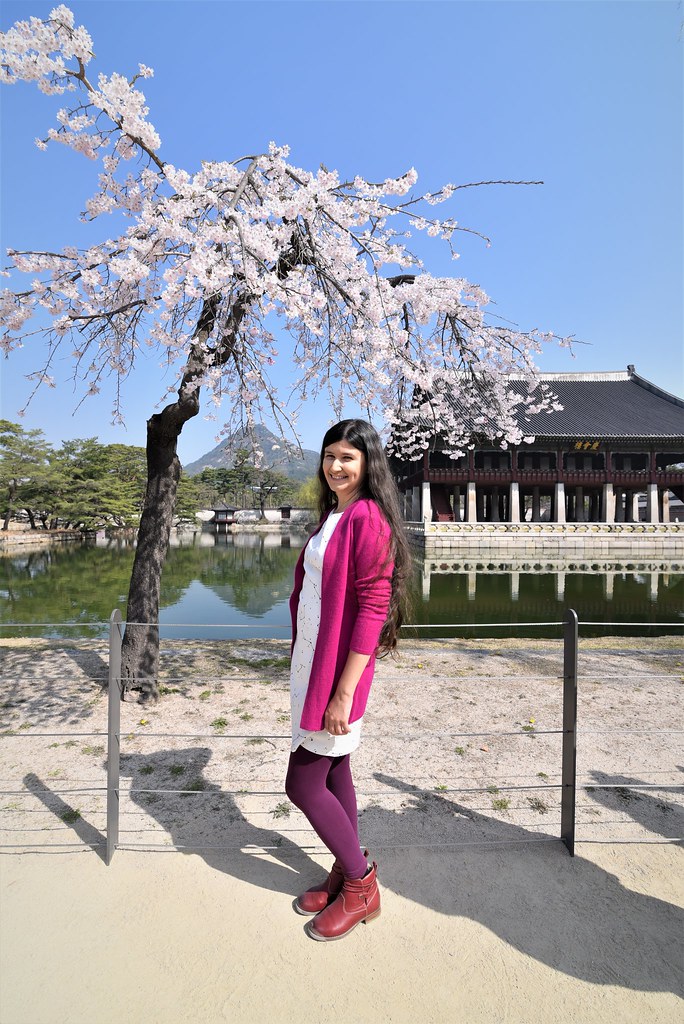


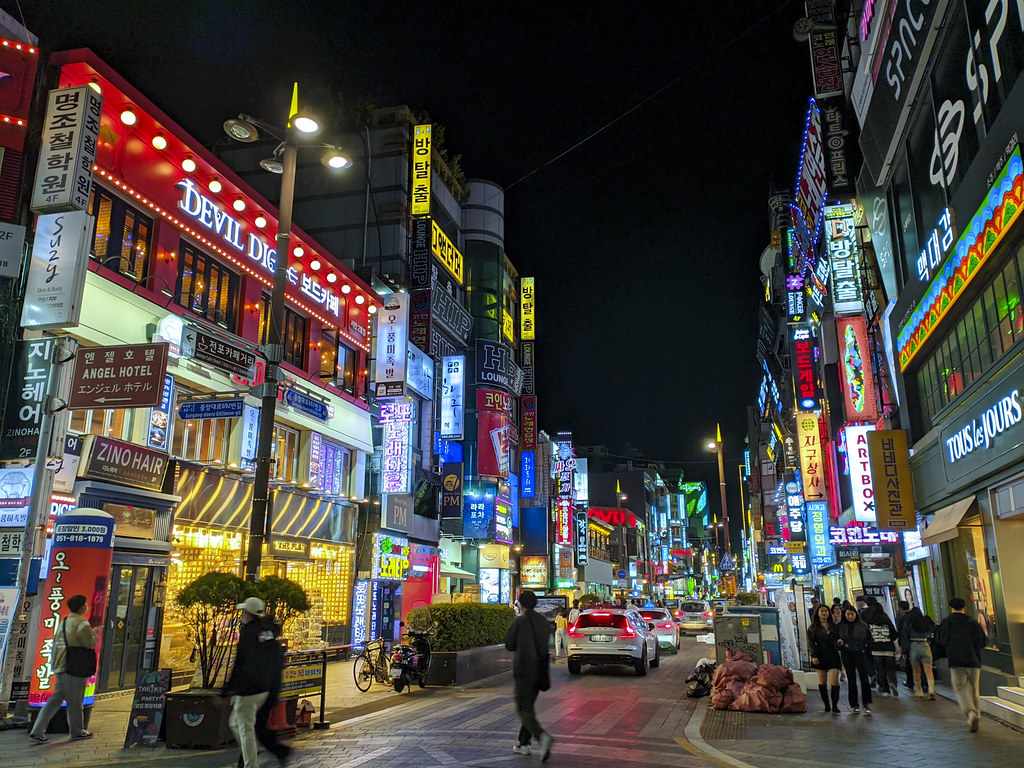

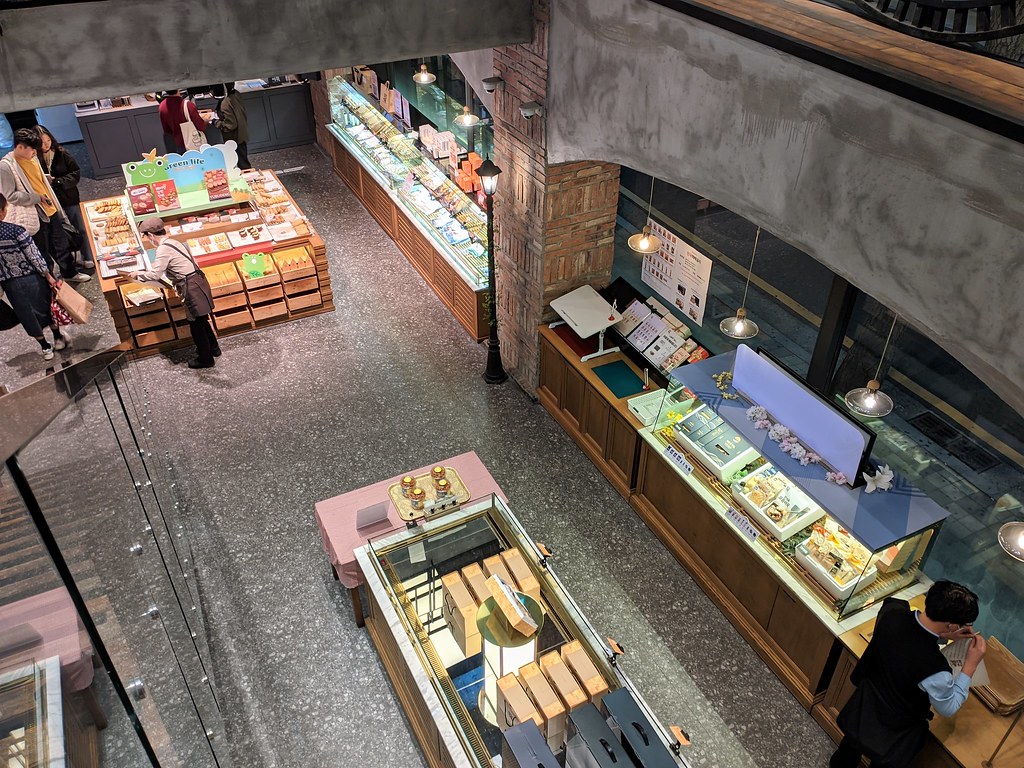

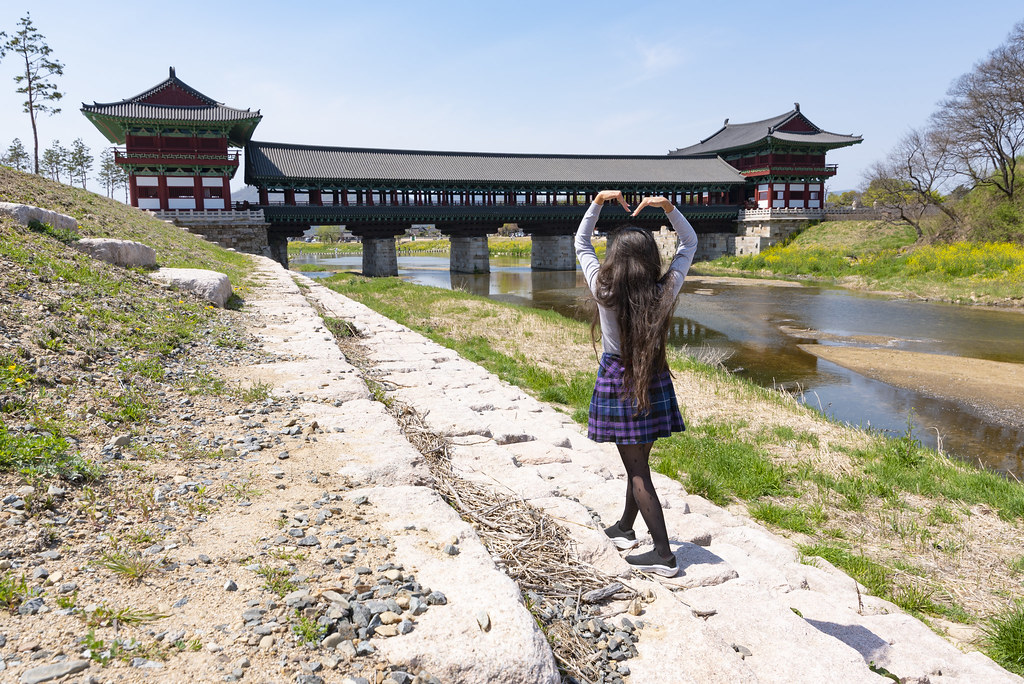
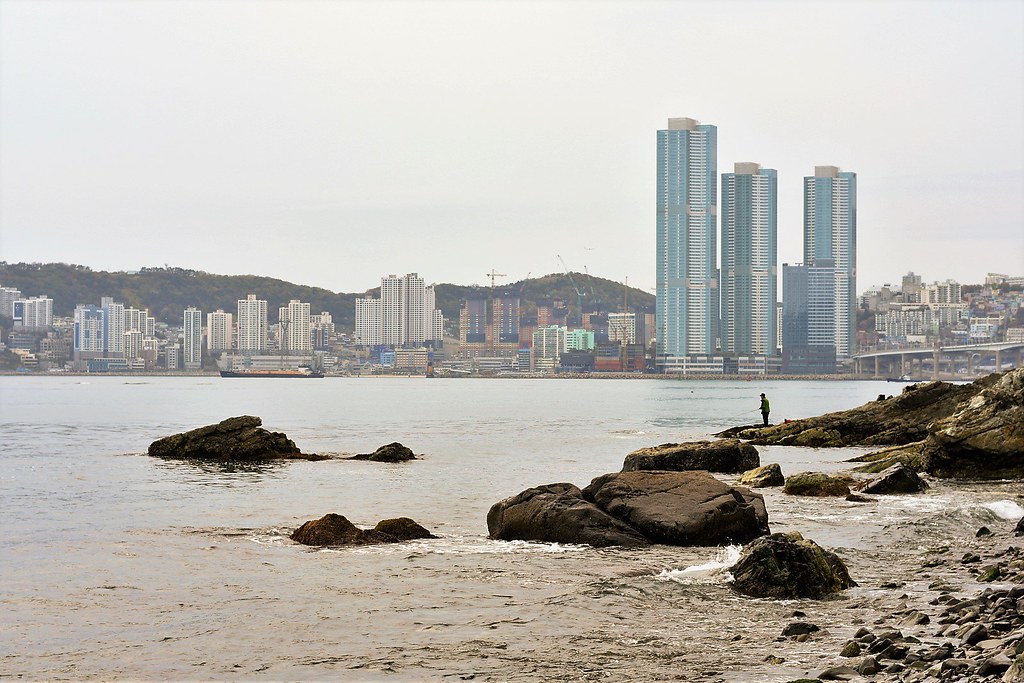


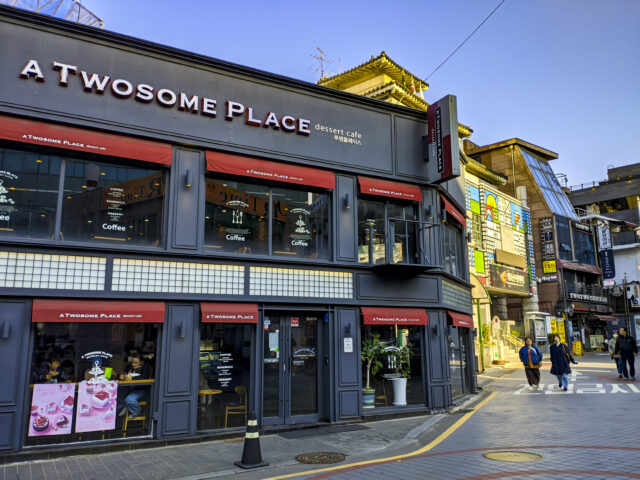
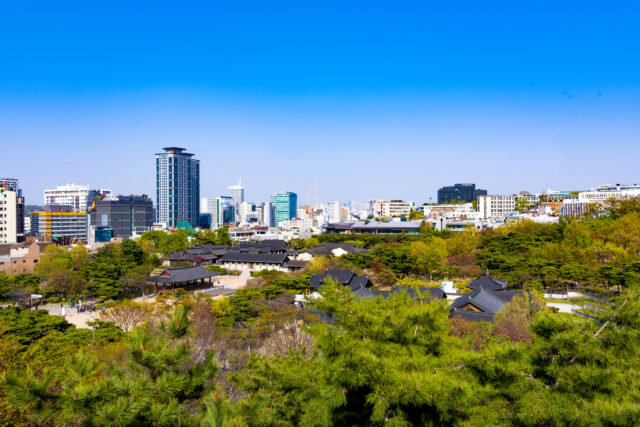
We had 3 days in South Korea on a cruise and got a small taste of this lovely country. Your post shows why we need to plan a return visit and see more. 2 weeks sounds like a perfect amount of time to really enjoy the sights. Good tip about getting train tips in advance.
It’s definitely worth another visit. I also wish to return again 😊